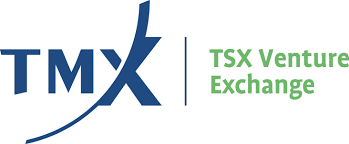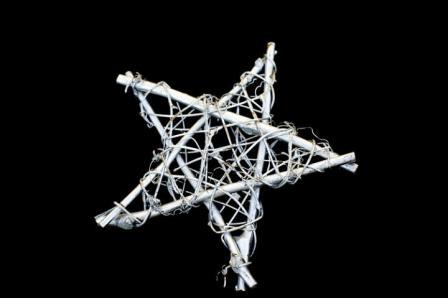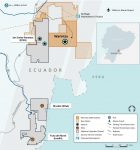Yesterday evening, Tahoe Resources Inc. (T:THO) reported its second quarter 2017 financial results of US$33.48-million. Daniel Earle of TD Securities found the results mixed. Earnings per share (EPS) beat on lower costs and the company suspended its dividend, which TD securities believes is prudent. Q2/17 adjusted EPS of $0.11 were above TD estimates of $0.08 (street consensus: $0.09) due to lower costs and expenses generally. Operating Cash Flow of $0.26 was above TD’s estimate of $0.22 (consensus: $0.23) and Haywood Securities estimate of ~US$0.20. However, the company suspended its multi-year guidance given the uncertainty at the Escobal silver mine.
On July 5, the company reported that the Supreme Court of Guatemala had issued a provisional decision to suspend the company’s Escobal mining license. The company has appealed the decision to the Constitutional Court and a ruling could come within the next three months. The company is are seeking to have its Escobal mining license reinstated during this period. TD securities is accounting for no production from Escobal for one year. The Casillas road block that is still in place, and reportedly shows no sign of immediate resolution. In a note to clients today, Geordie Mark of Haywood Securities notes that both the road block and the provisional decision to suspend the Escobal mining licence need to be resolved prior to operations returning. The Casillas road block is still in place, and there are reportedly no signs of immediate resolution to this situation.
Preliminary production results were released, with the company having reported production greater than 4 Moz Silver (Ag) and greater than 110 koz Au. Q2/17 total cash costs were not previously reported and were better than we anticipated. Until further clarity is obtained at Escobal, the company’s 2017 and multi-year guidance has been suspended and certain exploration and capital spending programs are being reviewed. 2017 gold guidance remained unchanged at 375-425 koz Au at total cash costs of $700-$750/oz.
The company has also deferred the La Arena II PEA and an investor day that was planned for mid-September. La Arena produced 48 koz gold at a cash cost of US$579/oz. Gold production was higher than our estimates (46 koz gold) on placing less (3.2 Mt vs 3.7 Mt) higher grade (0.46 g/t vs 0.43 g/t gold) on the leach pads. Cash costs bettered our forecast of US$670/oz.
Management reported that it views its expansion plans at the Shahuindo and Timmins mines as budgeted and required and that these projects are on track for completion in mid-2018. Shanuindo produced 21 koz gold, which was higher than Haywood Securities estimates of 15.4 koz gold, by placing more (1.3 Mt vs 0.98 Mt) tonnes of lower grade (0.65 g/t vs 0.73 g/t gold) on the leach pad. Reported cash costs of US$590/oz were much lower than their expectations of US$845/oz. Timmins Mines produced 41 koz gold that was lower than expectations (44 koz gold) on processing slightly more (356 kt vs 314 kt) lower grade (3.75 g/t vs 4.56 g/t gold) ore. Gold recoveries of 97% were slightly higher than the Haywood estimate of 96%. Cash cost of US$633/oz were marginally higher than Haywood’s estimates of US$632/oz
The company generated positive free cash flow (FCF) of $17 million in the second quarter of 2017, after spending $63 million in total capital expenditures. Haywood expects capex to increase in the second half of 2017. As at June 30, the company had cash and equivalents of $191 million and $35 million of debt due in April 2018. The company currently has access to $75 million from its undrawn credit facility.
On the year, shares in Tahoe Resources (T:THO) are down from a 12-month high of $22.11 and at time of publication, shares were trading down 25 cents to $6.35 on 3.6 million shares traded for the day, near 12-month lows. TD Securities provided a recommendation of hold and a high risk rating with a 12-month price target of $8.50. However, TD Securities may want to revise its price target given the uncertainty at Escobal and other brokerages price targets. Haywood Securities in a note to clients today maintained its hold rating with a price target of $6.75 (revised down from $7.25) with a high risk rating for shares of Tahoe. Significant upcoming catalysts will be any updates at the Escobal mine which should be expected in the second half of 2017.
 The S&P/Venture Composite Index finished down 0.3% to 768.04 and the S&P/TSX Global Mining index was up 0.15% to 66.52 for the day as the summer doldrums roll on. Gold closed up $1.50 at $1274.90 while silver closed down 9 cents to $16.70 and copper down 1.6 cents to $2.875. On the TSX Venture, 327 issues advanced, while 368 remained unchanged and 365 declined, 115,365,198 shares traded hands in 19,555 trades worth approximately $54,171,000. On the day, 21 companies reached new highs while 69 reached new lows on the Venture Exchange and 8 venture mining companies released drill results and sample assays.
The S&P/Venture Composite Index finished down 0.3% to 768.04 and the S&P/TSX Global Mining index was up 0.15% to 66.52 for the day as the summer doldrums roll on. Gold closed up $1.50 at $1274.90 while silver closed down 9 cents to $16.70 and copper down 1.6 cents to $2.875. On the TSX Venture, 327 issues advanced, while 368 remained unchanged and 365 declined, 115,365,198 shares traded hands in 19,555 trades worth approximately $54,171,000. On the day, 21 companies reached new highs while 69 reached new lows on the Venture Exchange and 8 venture mining companies released drill results and sample assays.
Precipitate Gold Corp. (PG) released results that included the discovery of mineralization in a previously untested anomaly to the south of the main zone yielding a 1.1-metre interval of 2.59 grams per tonne gold (including 0.11 per cent copper, 0.6 per cent lead and 0.65 per cent zinc) (GR17-15) and a main zone drill intercept of 14.73 metres of 1.16 grams per tonne gold, including 2.67 metres of 2.23 grams per tonne gold (GR17-13). Laboratory results are pending for eight more holes.
Klondike Gold Corp. (KG) reported today results from its lonestar property in the Yukon with 30.7 m of 1.6 g/t Au at Lone Star in the Yukon. Thus far in 2017, the drill program has completed 35 holes. Assays for the earliest 11 holes have been received, including 9 holes released today. Twenty-four holes are still in the lab queue, while drilling continues. The market response to the news was muted as shares in the company were down half a cent on 209,000 shares to 30 cents.
Panoro Minerals Ltd. (PML) provided an update of its exploration drill program at its Cotabambas copper-gold-silver project in Peru. Highlights of the program are from Drillhole CB-157, the first hole completed at the Maria Jose zone, intersected 195.2 m of copper mineralization grading 0.34 % Cu, 0.06 g/t Au and 1.6 g/t Ag. Shares of the company remain unchanged at 15.5 cents for the day.
Altamira Gold Corp. (ALTA) identified two new zones of mineralization have been identified at both Baldo East and Toninho, at its Cajueiro Project, Brazil. Results from the initial five trenches at Baldo East include 3m @ 6.54g/t gold including 1m @ 17.54g/t gold, and 6m @ 2.26g/t gold, and 3m @ 5.83 g/t including 1m @ 16.24g/t, and 1m @ 9.15g/t, and 9m @ 1.19 g/t including 1m @ 5.62g/t . Shares in the company were down half a cent to 18.5 cents on 286,700 shares.
Aurion Resources Ltd. (AU) released 452 rock samples assayed from nil to 2,520 grams per tonne (81.4 ounces per ton) with 32 assaying greater than 31 g/t Au (one ounce per ton), 45 greater than five g/t Au and 70 assaying greater than 1.0 g/t Au from its Aamurusko gold prospect, Finland. Share price declined 3 cents to $1.78 on 436,000 shares.
Margaux Resources Ltd. (MGX) released the results from initial surface rock sampling on its Bayonne and Jackpot properties, in Southern British Columbia. The results include gold assays from grab samples of up to 27.5 g/t (grams per tonne) gold on the Bayonne and widespread zinc mineralization at Jackpot including 20.8 per cent zinc from Jackpot Main. Shares in the company remained unchanged at 28 cents on 50,500 shares.
Galantas Gold Corp. (GAL) reported grab samples of between 1.1 and 11.0 grams per tonne gold and between 1.4 and 7.0 g/t silver from its underground mine Omagh Gold Mine, Ireland. The share price remained unchanged at 8 cents on 20,000 shares.
Mexican Gold Corp. (MEX) released its initial mineral resource estimate for the El Dorado/Juan Bran and Santa Cruz zones at its Las Minas project, Mexico. Total measured and indicated resource amount to 304,000 ounces AuEq contained within 4.97 million tonnes grading 1.9 g/t AuEq. The initial mineral resource estimate is for two of the eight known zones of mineralization at Las Minas. The company was halted at remains so at the end of the trading day.
According to TMX earnings calendar for the TSX venture, Avino Silver and Gold Mines Ltd. (ASM) should be releasing its second quarter 2017 results after the close of the market on August 2, 2017. Barkerville Gold Mines (BGM), North Arrow Minerals Inc. (NAR), and Orsu Metals Corp. are expected to be publishing their earnings tomorrow as well.
© 2017 MiningFeeds.com. All rights reserved.

It was another big week in the markets with positive gains across most of the world’s major exchanges. The TSX and TSX-V were no exception up 4.1% and 3.7% respectively. But we’re not interested in single digit returns, we’re taking a look at the top three mining companies that posted the biggest percentage gains this week on both exchanges.
1. Minco Gold Corp. (TSX: MMM) up 40%
On absolutely no news to speak of, Minco Gold posted this week’s top percentage gain on the TSX for mining companies closing the week at $1.26. Evidently, speculation alone may be sufficient to move the stock. Back on July 7th, 2011, Minco Gold announced the commencement of an initial diamond drill program of the Shajinba zone on its 100-per-cent-owned Yejiaba property, part of the Longnan project, located in Gansu province in China. The drill program consists of 2,000 metres of core drilling, and is designed to test the zone of gold mineralization discovered by the company in 2010. Minco Gold owns 13 million shares (approximately 22.25%) of sister company Minco Silver (TSX: MSV) which, like Minco Gold, was also quiet on the news front this week.
2. Uranerz Energy Corp. (TSX: URZ) up 33.8%
No news is also good news for the TSX mining sector’s second biggest gainer this week. Uranerz Energy is a near-term uranium producer based in Wyoming. The company’s first in-situ recovery mine is under construction and production is projected to start by mid 2012. The company has already entered into long-term uranium sales contracts with two of the largest nuclear utilities in the U.S., including Exelon. So what can we attribute this price move to? Two weeks ago it was announced that, as of Sept. 26, 2011, Robert Disbrow indirectly owns 2.6 million common shares and exercises control or direction over an aggregate 5,186,800 common shares of Uranerz Energy (for a total of 7,786,800 common shares). This equates to approximately 10.1% of the issuer’s issued and outstanding common shares and may have been the catalyst behind the recent upswing.
Robert (“Bob”) Disbrow is a well know Vancouver-based venture capital professional and made his mark on the markets as part of a group of brokers at First Marathon Securities that were under scrutiny from the Cartaway Resources scandal in the mid-1990s. The First Marathon brokers acquired roughly 7 million shares of Cartaway for around $0.10 in 1994 and rose to a high of $26 per share in early 1996. But on May 17, 1996, Cartaway announced that new assay results from its Voisey’s Bay property did not support earlier tests. Heavy trading in Cartaway shares ensued, crashing the Alberta Stock Exchange system. When trading in Cartaway resumed on May 21, the stock opened at $2.78 and ultimately collapsed. In July, 1998, Robert Disbrow, then First Marathon vice-chair and former Vancouver branch manager, agreed to a $110,000 fine and three-month suspension for his role in the Cartaway affair.
3. Champion Minerals Inc. (TSX: CHM) up 32.7%
In what appears to be a delayed response to drill results and a new resource estimate released last week, Champion Minerals was the third biggest mining-mover last week with a gain of just over 30%. Champion Minerals is a Canadian-based iron ore exploration and development company with properties located in Quebec and Labrador. Last week, the company announced drilling results from its Lake Moire property in Labrador which included 503.4 metres grading 31.2% total iron (FeT). Champion also provided a NI-43-101 updated resource estimate on its Fire Lake North project in Fermont, Quebec. The company reported measured and indicated resources total 400.1 million tonnes grading 30.6% total iron and inferred resources total 661.2 million tonnes grading 27.7% total iron. Tom Larsen, Champion’s president and chief executive officer, commented, “The updated resources at Fire Lake North have resulted in a substantial improvement over the initial estimate and far exceeded our expectations. These results will have a major impact on the updated preliminary economic assessment on the Fire Lake North project which is expected to be released next month.”
Not to be outdone, mining companies on the TSX-V Exchange actually posted the biggest gains on the week. We look at the top three widely-traded juniors and take a look at the factors that may have influenced their respective gains.
1. PMI Gold Corp. (TSX-V: PMV) up 87.3%
The stock that posted the biggest overall gain in the week ended October 14th, 2011, was PMI Gold. This move was in direct response to news issued on Thursday in which PMI Gold announced a 270% increase in the NI 43-101 gold resources estimates from its flagship Obotan gold project in Ghana, West Africa, to measured 1.22 million ounces, indicated 2.00 million ounces and inferred 1.29 million ounces. The Obotan gold project was previously operated by Resolute Mining (ASX: RSG) and closed in 2002 after producing a total of 730,000 ounces at an average grade of 2.2 grams per tonne gold when the price of gold was averaging US$350 per ounce. Shares of PMI Gold closed on Friday at $1.03, up $0.45 on the day, on volume of 13.9 million shares.
2. Leven Resources Ltd. (TSX-V: LVN) up 53.4%
Number two this week on the Venture board was North American exploration company Leven Resources. Last week, the company’s shares were trading at $0.88 when the company announced the grant of stock options for the purchase of up to 425,000 common shares at a price of $1.50 per share to directors, employees and consultants of the company. That’s right, $1.50 a share which translated into a 70% premium to the market. Evidently the market may have liked the confident approach of management and the company’s stock rallied this week closing on Friday at $1.35 per share.
3. Coral Gold (TSX-V: CLH) up 48.5%
Last but not least is Coral Gold. Coral posted a 48.5% gain on the week on no news. Perhaps the move might be attributed to a “sell” recommendation from newsletter writer Jay Taylor in late September issued when the stock was trading at $0.49. After the recommendation, the company’s shares traded down sharply to $0.30 on above-average volume but this week rebounded to previous levels closing the week at $0.49.
Coral Gold Resources is exploring a portfolio of claim blocks along the Cortez gold trend in north-central Nevada, collectively known as the Robertson Project. The company’s project is near Barrick Gold’s Cortez Mine, a low cost gold mine with reported proven and probable reserves of 13.4 million ounces of gold.

Gold is making regular headlines these days as global economic uncertainty remains high and the yellow metal recently reached record prices of just over $1,900 per ounce. Since a sharp correct where gold gave back over $200, the price has recovered and gold is currently trading around $1,885 per ounce.
Goldman Sachs said it expects gold prices to continue to climb in 2011. The U.S. based investment bank cited the current low level of U.S. real interest rates, European debt issues, balancing inflation with growth in China, and mixed data from several major economies as drivers for gold’s continued appreciation. “We recommend near-dated consumer hedges in gold,” stated analysts at Goldman Sachs and they expect further price increases later this year and into 2012.
According to Citigroup, a resurgence in investment demand has fueled gold’s rally over the past decade. Investment demand has grown from 4% of total demand for gold in 2000 to over 39% in 2010. “We caution that this very aspect that provided support for gold over this time may result in its downfall going forward,” noted Citigroup. “Even a slowdown, let alone a decline, in net investment flows can have a materially negative impact on the gold price from current levels.” So whether you are a gold bug bull or a gold bubble believer, one thing is for certain, there is no denying gold’s captivating run.
With all the excitement around the price of gold let’s not forget gold equities. Tye Burt, President & CEO of Kinross Gold (TSX:K) may have crystalized the argument for gold equities best when he stated in a recent interview with CNBC, “Gold price is up 25% year-over-year and our earnings effectively doubled. There is a leverage in the gold producers which will play out in their equity prices.”
MiningFeeds.com

Strategic Minerals (also know as Critical Minerals) is a broad-based category that constitutes various minerals and elements; the majority of which are minor metals. Geography and availability of domestic supply often defines which minerals are deemed “critical” for any particular region or country.
On July 20, 2011, the House Natural Resources Committee unanimously approved the “National Strategic and Critical Minerals Policy Act of 2011.” Natural Resources Committee Chairman Doc Hastings said, “Strategic and critical minerals are vital to our everyday lives. They are essential components of renewable energy, national defense equipment, medical devices, electronics, agricultural production and common household items. It is imperative that we identify the roadblocks to meeting our national minerals needs so that we can become less dependent on foreign supplies, increase our national security, and create more American jobs by securing our manufacturing industry and revitalizing our economy.”
While in Europe, the European Union issued a report on June 17th which identified 14 critical raw materials after evaluating 41 different minerals and metals. Raw materials were labelled “critical” if the risks for supply shortage and their impacts on the economy are higher in comparison with other raw materials.
MiningFeeds.com

Rare earth elements (or rare earth metals) are a set of seventeen chemical elements in the periodic table, namely the fifteen lanthanides plus scandium and yttrium. Scandium and yttrium are considered rare earth elements since they tend to occur in the same ore deposits as the lanthanides and have similar chemical properties.
Despite their name, rare earth elements (with the exception of the radioactive promethium) are relatively plentiful in the Earth’s crust, with cerium being the 25th most abundant element at 68 parts per million. However, because of their geochemical properties, rare earth elements are typically dispersed and not often found in concentrated and economically exploitable forms. The few economically exploitable deposits are known as rare earth minerals. It was the very scarcity of these mineral bodies (previously called “earths”) that led to the term “rare earth”.
Prices of rare earth elements skyrocketed when China began to limit exports of the enigmatic metals in 2009. But does this mark a genuine shift in the supply demand curve? Some think so. John Meyer, head of resources at Fairfax investment bank states, “There are very real risks of a shortage.” And just last month, rare earth elements were a key component of the newly legislated Critical Minerals Policy Act in the United States.
While others think that the price of rare earths, some having gained more than ten times their value over the past few years, is about to change. Goldman Sachs analyst Malcolm Southwood says the supply deficit of rare earth metals will peak at 13.2%, or just over 141 thousand tonnes this year, but will actually reach a surplus of 3.2% as soon as 2013.
Having made a significant move to the upside, are rare earth elements the new rockstar of the mining sector or is this another classic speculative bubble? We’re not touching that question with a ten foot guitar.
MiningFeeds.com

On April 24th, the price of silver reached nearly $50 an ounce before a hasty retreat to $32.32. Ask some, and silver’s impressive move from under $20 an ounce just eight months earlier was a predictable bubble ready to pop. Others, however, say the move was inevitable considering market forces and the devaluation of global currencies.
On April 25th, the day silver began its sharp correction, Hakan Kaya, a commodities portfolio manager at Neuberger Berman an international asset management company with almost $200 billion on the books said, “At current prices, we find it (silver) highly overvalued with no fundamental reasons backing it up.” This sentiment, shared by many, set the stage for a staggering 35% correction in less than three weeks.
But since the dramatic pullback in early May silver has recovered over $5.50 an ounce trading at $38.00. Eric Sprott, the founder of Sprott Asset Management is not surprised. Sprott calls silver “the best recommendation anyone could make this decade”, and sees silver going to $100 an ounce within the next 3 to 5 years. Recently, MiningFeeds.com featured Eric Sprott in, “Sprott still bullish on Silver” – CLICK HERE – to read the article.
MiningFeeds.com

In mining and economics, base metals are often referred to as non-ferrous metals. Non-ferrous metals is a broad category that includes the likes of aluminum, molybdenum, tantalum and magnesium. However, ‘The Big 5’ in the group are copper, zinc, lead, nickel and iron.
When investors think of base metals they probably think of China as well. China’s metal capacity continues to rise, 2010 was a record production year for all base metals and China is ranked number one in the world for output of aluminum, lead, zinc and tin. It is also the leading copper and nickel consumer.
Base metals oxidize, tarnish or corrode relatively easily when exposed to air or moisture. Base metals are widely used in commercial and industrial applications. They are more abundant in nature and therefore far cheaper than precious metals such as gold, silver and platinum.
The term “base” metals arose because these materials are inexpensive and more commonly found than “noble” metals such as gold and platinum; however, base metals are invaluable to the global economy because of their utility and ubiquity.
Copper, a leading base metal, is often called the “metal with a Ph.D. in economics” because its widespread use makes its price very sensitive to global economic trends. For this reason, many call it “Dr. Copper”.
MiningFeeds.com

Not all alkali metals are created equally. All of the alkali metals share similar properties: they are highly reactive metals under standard conditions and are thus never found in their elemental form in nature. The two alkali metals that are of particular value to investors are lithium, due to its high electrochemical potential; and potassium, because of its role in plant nutrition. In the commodity world, lithium is better known as lithium carbonate while potassium is better known as potash.
Everywhere you look these days, food is news. From increasing demand from a burgeoning Chinese middle class that has sent commodity prices soaring to a Tunisian fruit seller sparking a revolution it’s hard to go a day without hearing that the world food situation has entered dangerous territory. The food crisis has sent prices of potash, which replaces soil nutrients, soaring. A few years ago one would be hard pressed to find any junior potash exploration companies. Today, a number of projects are being advancing in Canada and abroad.
Lithium, one of the more unconventional commodity plays, is also one of the most challenging for investors to grasp. As Virginia Heffernan noted, “Lithium is one of the more difficult commodities to assess because economic viability depends so much on the deposit type and the ability to covert resources into a product that can be successfully marketed to end users.” This hasn’t held back junior exploration companies as a number have been quick to react to what they believe will be a battery of future demand.
MiningFeeds.com

Can the price of gold keep rising? Talk to gold bugs and they will tell you key drivers such as political instability and inflation are bigger issues today than when the yellow metal began the stellar rise that tripled its price in half a decade.
But gold has its critics, and their rebuttal was crystallized by Warren Buffett who said he would rather own “all of the farmland in the United States, 10 Exxon Mobils, plus have $1 trillion of walking-around money” instead of all the gold in the world. In the meantime, gold bugs have been gaining adherents from the world of economics. Former Fed Chairman Alan Greenspan, for instance, believes there is increasing evidence that economies do better when pegged to a gold standard, as the US was from 1870 to 1914.
The Economist’s Edward George takes a more practical view of gold’s rise. He doesn’t “…believe the price can fall below U$800/troy oz for long, as over half of current gold mining operations are only profitable at a price of at least US$1,000/troy oz. If the price falls below this level for a long time they will simply stop producing, reducing supply and ultimately driving up the price again.”
The rising tide of gold prices has lifted most all the boats in the public markets. Some gold miners, candidly, aren’t sure the price is sustainable. Others have delivered huge margins by behaving as though the price of gold hasn’t moved, making smart acquisitions, removing hedge and keeping their cost of production down. As we approach the Ides of March it appears gold and gold companies are set to have very interesting 2011.
If you would like to receive our free newsletter via email, simply enter your email address below & click subscribe.
CONNECT WITH US
Tweets
Tweet with hash tag #miningfeeds or @miningfeeds and your tweets will be displayed across this site.
MOST ACTIVE MINING STOCKS
Daily Gainers
 Lincoln Minerals Limited Lincoln Minerals Limited |
LML.AX | +125.00% |
      |
GCR.AX | +33.33% |
      |
CASA.V | +30.00% |
      |
AHN.AX | +22.22% |
      |
ADD.AX | +22.22% |
      |
AZM.V | +21.98% |
      |
NSE.V | +21.05% |
      |
DYG.V | +18.42% |
      |
AAZ.V | +18.18% |
      |
GLA.AX | +17.65% |


 Follow us on Twitter
Follow us on Twitter Become our facebook fan
Become our facebook fan







